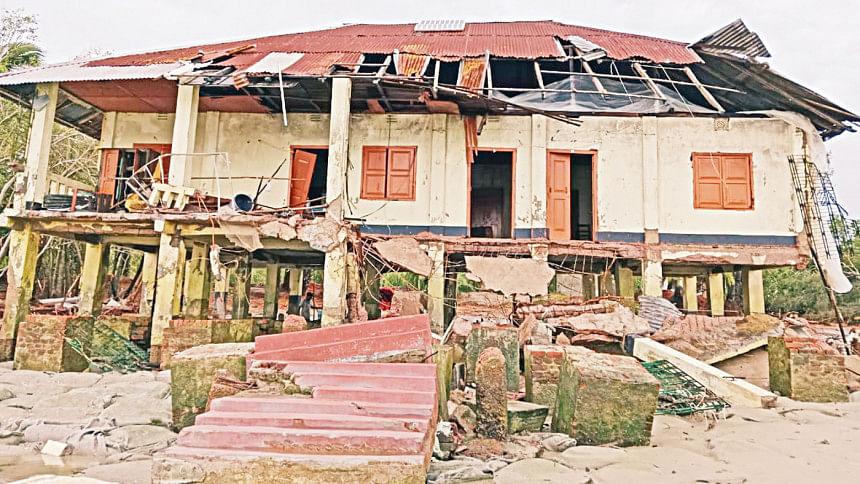Sundarbans saves Bangladesh but pays a heavy price

The Sundarbans, Bangladesh's "silent protector", the shield and first line of defense against natural disasters, has once again safeguarded the nation from a cyclone -- Remal.
However, it came at a heavy cost to the forest's wildlife and ecosystem.
While the human cost of cyclones can be tragically clear, assessing the immediate impact on wildlife after such disasters proves far more difficult. The true number of animal deaths may take quite some time to emerge.
However, a grim picture is starting to unfold. Videos and photographs are surfacing, showing the bodies of dead deer scattered across the forest floor as floodwaters recede.
Forest officials have confirmed at least 39 deer perished, with 17 others were rescued. Sadly, this is likely just the tip of the iceberg. Reports suggest numerous other animals, including precious tiger cubs, were swept away by the high tide.
The tidal surge, reaching heights of 10-12 feet, inundated the entire Sundarbans.
Meanwhile, many trees were also uprooted, although it was not as many as during cyclones Sidr and Aila.
Besides, various structures including forest department offices, staff quarters and several jetties have been damaged.

The immediate challenges for the Sundarbans are immense. Freshwater sources remain contaminated by saltwater, creating a dire drinking water shortage for both animals and local residents.
"The tidal surge this time was much higher than it was during Sidr and Aila," said Howladar Azad Kabir, officer-in-charge of Karamjal Wildlife and Breeding Center of East Sundarbans.
"Everywhere inside the breeding centre there is waist-high water now. Fortunately, there was no damage to the animals including crocodiles and turtles at the centre," he added.
The water also rose to 10-12 feet high in Dublar Char, Katka, and Kachikhali areas of Sundarbans on the sea coast.

"The Sundarbans is not just a forest; it is a shield of protection for our coast. The forest is sacrificing parts of itself during every natural disaster while saving us," said Professor Anwarul Kadir, executive director of Sundarban Academy.
Mihir Kumar Doe, conservator of forest (Khulna Circle), said, "I think the animals were more affected in the tidal surge this time compared to trees. During Sidr, many trees were uprooted but the animals were not harmed as much. Cyclone Remal caused flooding in most areas of Sundarbans including Mandarbaria, Katka, and Kachikhali areas."
"After 36 hours, water level started coming down yesterday. But many animals inside the forest might have been swept away in the meantime, as it is difficult for tiger cubs, deer and even adult animals to survive this long with no high ground anywhere," he also said.
"Also, about a hundred freshwater ponds inside the forest have all been submerged, causing an acute crisis of drinking water for animals. We will report the extent of losses after conducting a survey,'' he added.

 For all latest news, follow The Daily Star's Google News channel.
For all latest news, follow The Daily Star's Google News channel. 










Comments